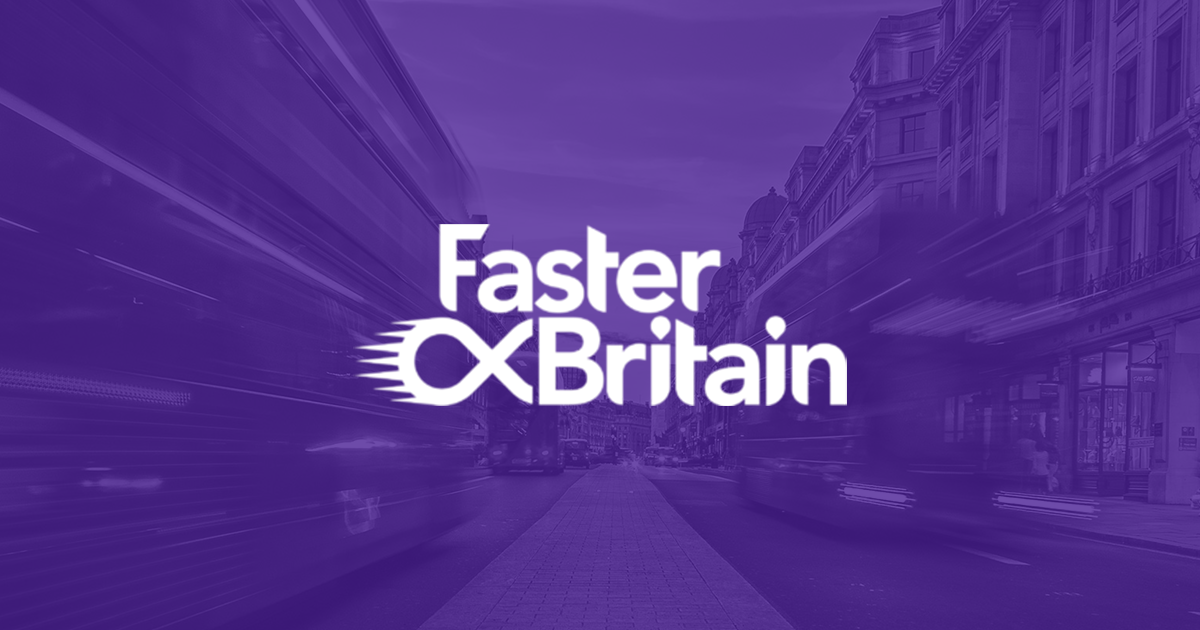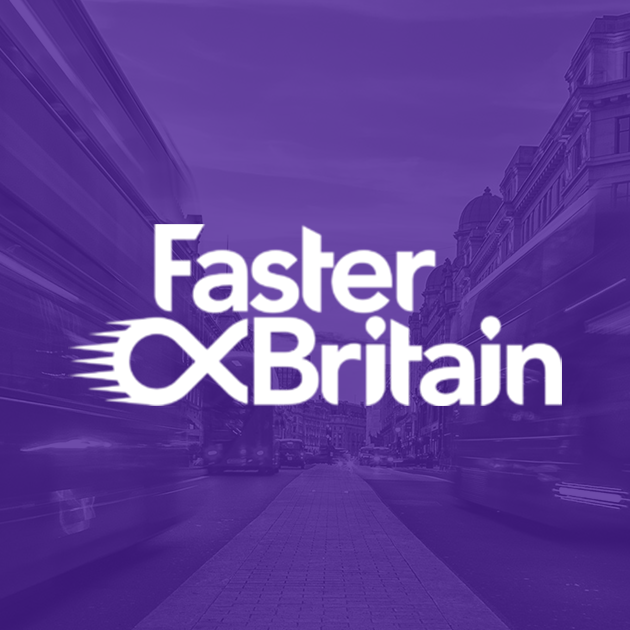When you’re thinking of switching broadband providers, it’s easy to get lost in the jargon of products. However, being as clued up as possible when you’re looking for just the right package for your business is essential to determine whether the add-ons and features are designed to support growth, flexibility, and technology usage. Ultrafast full fibre connectivity should be universally accessible, no matter your industry or telecoms experience. If you’re scratching your head over some difficult terms, we’ve created a guide to all you need to know.
Products and Services
Gbps: Gigabits per second
Mbps: Megabits per second
Committed Information Rates (CIR): This refers to your fibre connectivity speeds, or your personal lane on the ultrafast highway.
Minimum Term: Refers to the minimum time you’re committed to your Faster Britain connection.
Uptime: The amount of time that your connectivity is fully operational.
Symmetrical: Symmetrical refers to equal bandwidth capability.
Technology
FTTP: Fibre to the Premises; a type of fibre connectivity that uses 100% fibre optic connections, with no copper – capable of up to 10Gbps over a leased line with Faster Britain.
FTTC: Fibre to the Cabinet; a type of fibre optic communication where the fibre reaches the street cabinet, and copper cables carry the signal to the premises.
Fibre: A connection comprising both copper and fibre, providing speeds of up to 80Mbps up and 20Mbps down.
LAN: A Local Area Network is a network connecting devices in a single area – such as an office.
WAN: Wide Area Network; a network spanning a large area to connect multiple LANs. It’s used by businesses to connect offices in various locations.
GPON: A type of fibre optic technology that only spans to 1Gbps. This is primarily used for products suitable for smaller premises and sites.
XGS-PON: 10 Gigabit-capable Symmetric Passive Optical Network; fibre optic technology offering symmetrical upload and download speeds up to 10 Gbps. Having an XGS-PON-capable connection is ideal for high-bandwidth business applications and growing teams.
Leased Line: A leased line is a dedicated telecommunication line offering high performance and reliability. It is beneficial for businesses needing consistent and secure connections against both downtime and cybersecurity attacks.
ADSL: Analogue Digital Subscriber line; the historic copper telephone connectivity solution in place for over a century in the UK – the most outdated broadband solution. It offers little more than 24Mbps up and 10Mbps down.
Ethernet P2P: Point-to-Point Ethernet; a direct Ethernet connection between two locations. Used for high-speed, dedicated connections in business environments.
VAS: Value Added Services; a set of add-ons provided by Faster Britain to upgrade products with added resiliency and boost business continuity.
Cloud Services: Services provided over the internet, including data storage, software applications, and processing power. Essential for modern business operations and scalability. Examples include Amazon Web Services (AWS) and Microsoft Azure.
Dynamic IP: Other providers use dynamic IP, which is an IP address shared between multiple devices. This is less suitable for VoIP business applications, as they require a static IP to operate effectively.
Static IP: As Internet Protocol addresses are assigned to a particular device when connecting to the internet, in some cases, IP addresses may be allocated to several devices on the same network. Static IPs on the other hand is allocated to a specific device permanently, making it essential for businesses that run multiple servers internally.
Contention Ratio: The maximum number of users sharing a data transmission line. A lower contention ratio means less sharing and better performance for each user. A typical residential broadband service has a contention ratio between 1:20 and 1:60, whereas Faster Britain will only ever have 1:8 as a maximum. With FibreBright, there is no contention, providing businesses with their very own connectivity highway, not just a lane.
Ping times: The time a packet of data takes to reach a host and return. This is critical for measuring the speed of a service. You’ll typically see the term when you conduct a speed check on your device.
VoIP: Voice over Internet Protocol, a technology that allows for voice and video communication and is the key catalyst of the PSTN switch-off. You’ll see this used when referring to virtual conferencing, Microsoft Teams calls and Zoom meetings.
SLA: Service Level Agreement; Faster Britain’s agreement to meet a certain quality standard, e.g., a six-hour fix time
Navigating the world of business broadband can seem daunting with the volume of technical terms. However, understanding the key jargon is crucial for making informed decisions about your broadband that can significantly impact your business’s productivity and efficiency.
As the UK’s leading business broadband provider, Faster Britain is committed to delivering genuine business-grade solutions that grow with you and the education you need to choose your solution wisely. Now you’re an expert in all things telecoms jargon, why not check out Faster Britain products and services and see if we can take your business connectivity to the next level?





